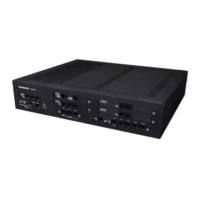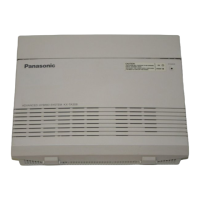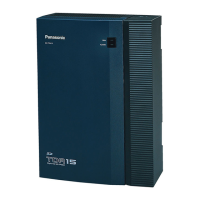Features Descriptions Connections
Digital XDP Allows a DPT to be connected to another DPT
which is connected to
a DPT port or a Super Hybrid
port of the PBX. The DPT that is connected directly
to the PBX is called the "master DPT", and the DPT
connected to the master DPT is called the "slave
DPT".
Similar to XDP mode, each DPT acts as a
independent extension with its own extension
number.
If a master DPT is connected to the PBX by a Super
Hybrid port (not a DPT port), a third telephone (SLT)
can also be in parallel or XDP mode with the master
DPT.
Digital XDP connection allows the number of DPTs
that the PBX supports to increase.
PBX
DPT + DPT
DPT
Extn. 101 Extn. 201
DPT
Master
Slave
PBX
DPT
Extn. 101
Extn. 201
SLT
Extn. 101 (in Parallel Mode)
or
Extn. 105 (in XDP Mode)
DPT
Master
Slave
DPT + DPT + SLT
Wireless XDP
Parallel Mode
For information on this type of parallel connection,
refer to the Wireless XDP Parallel mode feature.
(® 20.1.5 Wireless XDP Parallel Mode)
PBX
PS
PT
APT/DPT/SLT + PS
PS
SLT
Extn. 101
Extn. 101
Extn. 102
Extn. 102
Conditions
[APT + SLT]
• If one telephone goes off-hook while the other is on a call, a three-party call is established. If one user goes
on-hook, the other user continues the call.
• An extension user cannot originate a call from the SLT if the APT is:
– playing background music (BGM)
– receiving a paging announcement over the built-in speaker.
• The SLT will always ring for incoming calls (if its ringer is turned on). It cannot be programmed to not ring.
Document Version 2013-05 Feature Manual 217
13.1.2 Paralleled Telephone

